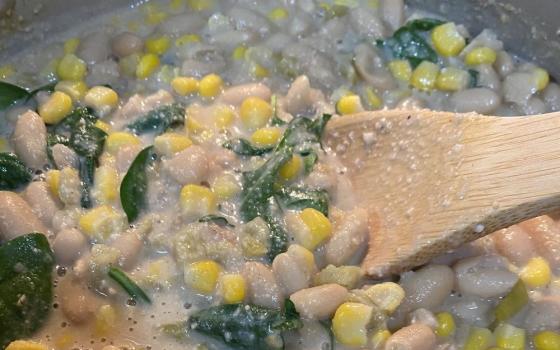
The Christmas narrative, focused on the Bethlehem nativity, has captured the imaginations of Christians through centuries. What is it about this image we find so captivating?
"Crèches are the perfect poetic metaphor for our faith," explains Dr. Nora Heimann, associate professor and chair of the art department at The Catholic University of America. “Crèches celebrate a return to the most basic principles of our faith, Jesus as a child. God then is not just a concept, but is real and human in the person of Jesus.”
Building on this Christian imagery, for the fifth consecutive year, the Knights of Columbus museum in New Haven, Conn., is presenting an exhibit on crèches. This year’s theme is titled, “A Latino Christmas: Nativities of Latin America.”
“We put on the crèche exhibits to provide a venue for families to receive an uplifting religious experience,” said Lawrence Sowinski, the museum’s director.
The Latino exhibit includes 120 hand-made crèches from 16 Latin American countries, the Caribbean and four southwestern U.S. states, Arizona, Colorado, New Mexico and Texas.

“For the Hispanic community, especially immigrants, this free exhibit offers an opportunity for adults and children to better understand their native countries,” said Sowinski.
Beginning in January 2009, Sowinski began contacting crèche collectors about loaning their art to the museum. “It was absolute joy when I learned that the Banamex pieces were available,” said Sowinski, referring to the Mexican bank’s art collection. Five other collectors loaned crèches for the exhibit.
For the third straight year, Crèches International at the Marian Library/International Marian Research Institute at the University of Dayton, also contributed pieces. The institute is an international center of study and research on Mary, the Mother of Jesus.
“As a university with a Marianist charism, we wanted to find a way to bring the Incarnation visually to all people, not just to academics,” said Society of Mary Father Steven Roten, director of the institute. “Museum-quality nativity sets allow us to bring the beauty of the Incarnation to the people,” he said. Today the institute has over 3,000 artifacts and is the largest crèche collector in the U.S.
 “Crèches contain social, political and cultural dimensions, even a call for justice,” Roten explained. “It is essential to pass on Christ’s birth to people.”
“Crèches contain social, political and cultural dimensions, even a call for justice,” Roten explained. “It is essential to pass on Christ’s birth to people.”
Artists used any material available in making the crèches, including clay, wax, wood, wire, auto parts, cow horns, stone, fabric, gold leaf and papier-mache.
Peru, Mexico and New Mexico are the largest producers of crèches.
“The design styles ranges from folk to fine art and the artists show great versatility,” said Sowinski.
While some crèches are simply designed, many are remarkable in the use of color, detail, workmanship, composition and planning.
The New Haven exhibit reflects numerous interpretations of the birth of Christ. For example, in many Mexican pieces, one of the three wise men has blond hair. The figures in certain Spanish configurations are aristocrats. Some crèches present Christianity rising out of the ruins of a pagan temple atop a pyramid.
In certain Native American crèches, the Magi are represented as Indian chiefs. In lieu of gold, frankincense and myrrh, these chiefs present peace (peace pipe), food (corn) and warmth (animal skin).
One nativity scene is made up of only senior citizens to represent the wealth of life’s experiences and achievements that senior citizens bring the to the Christ child.
Several presentations of the Blessed Mother show her in the likely position of lying down next to the Infant Jesus.
In the broader perspective, “religion and culture influence one another,” said Roten. “Nativity scenes by their very nature draw us into this reflection.”
“When one looks at the pieces en masse you realize how important the universality of the birth of Christ really is,” said Sowinski. Others agree. The museum’s visitors’ book contains comments like “breath-taking,” “fascinating” and “wonderful.”
Tom Gallagher is a regular contributor to NCR. He can be reached at tom@tomgallagheronline.com.
Online Resources
For more information about the exhibit, click here.
For more information on the Marian Library at the University of Dayton, click here.




